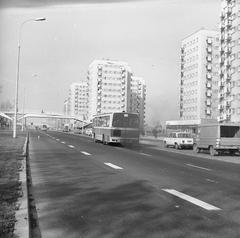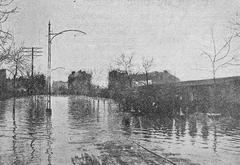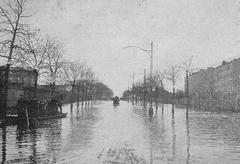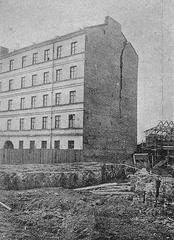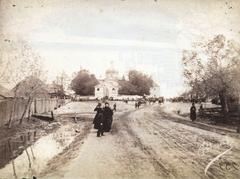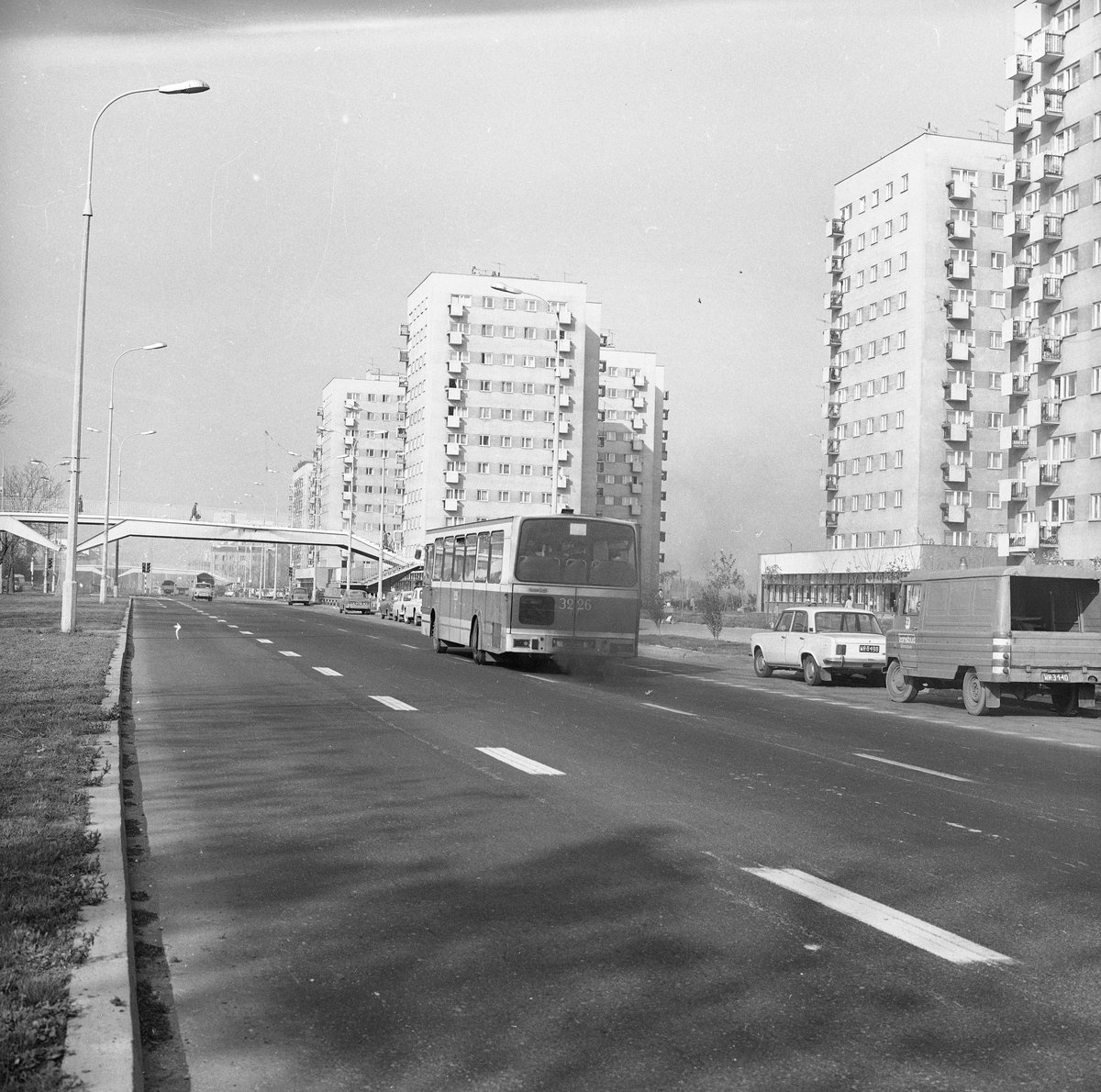
Visiting Czerniakowska Street, Warsaw, Poland – Guide to Tickets, Hours, and Attractions
Date: 14/06/2025
Introduction: History and Significance
Czerniakowska Street is a vital artery in Warsaw’s Mokotów district, weaving through the city’s centuries-old history and cultural fabric. Tracing its origins to an ancient route connecting the Ujazdowski tract with the Vistula River and the village of Czerniaków, this street’s story stretches back to at least 500 BCE (Wikipedia - Ulica Czerniakowska; Wikipedia - Czerniaków). Over time, it transformed from a rural track into a bustling urban corridor, home to significant architectural, social, and memorial landmarks, including the St. Anthony of Padua Church, the Warsaw Uprising Mound, and numerous residential estates shaped by the garden city movement.
Czerniakowska Street has witnessed Warsaw’s industrialization, the trauma and heroism of the Warsaw Uprising, postwar reconstruction, and ongoing modernization. Today, it is not only a living testament to the city’s resilience but also a vibrant neighborhood filled with parks, cultural sites, and community life. Visitors can explore freely at any time, with key attractions open to the public and easily accessible via Warsaw’s extensive public transportation network (museumstudiesabroad.org; Warsaw Public Transport Authority).
Table of Contents
- Introduction
- Historical Overview
- Visiting Czerniakowska Street: Practical Information
- Frequently Asked Questions (FAQ)
- Visuals and Media
- Explore More and Stay Connected
- Conclusion
- References
Historical Overview
Origins and Early Development
Dating back to ancient times, Czerniakowska Street originated as a route linking the Ujazdowski tract to a Vistula River ford and the village of Czerniaków (Wikipedia - Ulica Czerniakowska). Archaeological finds, like a flint axe from around 500 BCE, demonstrate early human activity. By the late 17th century, the area had developed into a social and religious center, marked by the construction of the St. Anthony of Padua Church in 1687.
Incorporation into Warsaw and Urbanization
Previously rural, the street and its surrounding areas were officially incorporated into Warsaw on April 1, 1916, spurring rapid urbanization (Wikipedia - Ulica Czerniakowska). During the interwar years, transportation improved with the introduction of tram lines, and residential projects began to reshape the landscape.
Industrial and Infrastructural Transformations
The late 19th and early 20th centuries saw the establishment of Czerniaków Harbour (1865) and the River Pumps Station (1886), integrating the street into Warsaw’s municipal and industrial infrastructure (Wikipedia - Czerniaków). Fort IX, a Russian Imperial military installation, influenced the area’s urban layout. The Wilanów Railway, operational from 1891 to 1957, further connected Czerniakowska Street to the wider city.
Social and Residential Evolution
Historically one of Warsaw’s poorer districts, known as the “Lowland” (Dół), the area underwent significant transformation in the early 20th century. Drainage projects in the 1930s enabled new residential developments, while the garden city movement inspired villa neighborhoods along the street (Wikipedia - Czerniaków).
World War II and the Warsaw Uprising
Czerniakowska Street was heavily damaged during World War II, especially in the 1944 Warsaw Uprising. The aftermath saw the creation of the Warsaw Uprising Mound, constructed from the city’s rubble and now a prominent memorial and viewpoint (museumstudiesabroad.org).
Postwar Reconstruction and Modernization
Post-1945, the street was rebuilt as part of Warsaw’s recovery, with high-rise housing estates and infrastructural modernization defining the landscape (muzeumwarszawy.pl). Czerniakowska Street became a major urban artery, integrated into the Wisłostrada route and Poland’s national and regional road networks.
Contemporary Significance and Memorials
Today, Czerniakowska Street is a blend of historical legacy and modern development. Landmarks include the St. Anthony of Padua Church, the Warsaw Uprising Mound, and the Monument to Soldiers of the Peasant Battalions and People’s Union of Women (Wikipedia - Czerniaków). The street remains a vibrant community hub, with green spaces and local amenities adding to its appeal.
Visiting Czerniakowska Street: Practical Information
Visiting Hours and Accessibility
- Street Access: Open 24/7; visitors may explore at any time.
- St. Anthony of Padua Church: Typically open 9:00 AM–6:00 PM daily. Confirm hours via the parish’s website or local tourist information.
- Warsaw Uprising Mound and Operation Tempest Park: Public spaces are open year-round, free of charge, and feature accessible paths and viewing points.
Tickets and Admission
- Street and Parks: Free access; no tickets required.
- St. Anthony of Padua Church: Free; donations appreciated.
- Museums and Other Sites: Some nearby attractions may charge admission (see below for details).
Getting There and Travel Tips
- Public Transport: Served by multiple bus lines (e.g., 107, 141, 148, 162, 180, 187, 131, 185, N33, 119, 402, N03, N31, N81) and nearby tram connections (Moovit).
- Tram/Metro: While the street itself is not directly served by trams, nearby lines and the M1 metro provide easy access.
- Parking: Limited street parking; Park & Ride facilities or public transport are recommended.
- Cycling/Walking: Sidewalks and some bike lanes are available, especially near parks and the Vistula boulevards.
Nearby Attractions
- Łazienki Park: Open daily from 6:00 AM to dusk; free entry, tickets required for museums and palaces within (Warsaw Tourist Information).
- Wilanów Palace: Open Tuesday–Sunday, 9:00 AM–5:00 PM; ticket prices vary by exhibition (Warsaw Tourist Information).
- Warsaw Uprising Museum: Guided tours available; check for ticketing (Warsaw Uprising Museum).
- Czerniaków Cemetery and Sadyba Cemetery: Accessible year-round; free entry.
- Museum of Polish Military Technology: Open Tuesday–Sunday, 10:00 AM–5:00 PM; tickets 15 PLN (adults), 10 PLN (students/seniors), children under 7 free.
- Czerniakowskie Lake & Siekierki Park: Year-round access for recreation and birdwatching.
Frequently Asked Questions (FAQ)
Q: Is Czerniakowska Street suitable for walking tours?
A: Yes, it is pedestrian-friendly, with accessible sidewalks and nearby historical landmarks.
Q: Are there guided tours available?
A: Local operators and the Warsaw Uprising Museum offer guided tours focused on Czerniaków and related sites.
Q: Are memorials and parks accessible all year?
A: Yes, public memorials and parks are open year-round and free to visit.
Q: Are the main churches and cemeteries free to enter?
A: Yes, generally free; some may welcome donations.
Q: How do I reach Czerniakowska Street by public transport?
A: Multiple bus lines serve the street; use apps like Moovit or Jakdojade for real-time navigation.
Q: Is the area safe for visitors?
A: Yes, districts along Czerniakowska are considered safe, well-lit, and regularly patrolled by police (Traveler Bibles; Travel Like a Boss).
Visuals and Media
- Interactive Maps: Use Warsaw tourism portals for maps and virtual tours.
- Images: Key landmarks include the Warsaw Uprising Mound, St. Anthony of Padua Church, and Czerniaków Memorials.
- Alt Text: Use descriptive tags like “Czerniakowska Street Warsaw,” “St. Anthony Church Czerniaków,” and “Warsaw Uprising Mound view.”
Explore More and Stay Connected
- Related Articles: Explore other guides on the Mokotów district, Warsaw Uprising sites, and historic churches.
- Audiala App: Download for guided audio tours of Warsaw, including Czerniakowska Street (Audiala Audio Tours).
- Social Media: Follow for event updates and new travel content.
Conclusion
Czerniakowska Street stands as a living chronicle of Warsaw’s transformation—its rural origins, tragic wartime history, and modern vibrancy. With free and accessible public spaces, rich historical sites, and convenient transport, it is an ideal destination for travelers seeking a deeper understanding of Warsaw’s heritage. Plan your visit with the practical tips above, immerse yourself in the street’s stories, and let Czerniakowska be your gateway to the heart of Warsaw.
References and Further Reading
- Ulica Czerniakowska w Warszawie (Wikipedia)
- Czerniaków (Wikipedia)
- Cultural Memory Warsaw Uprising (Museum Studies Abroad)
- Warsaw Public Transport Authority (ZTM)
- Warsaw Uprising Museum Visiting Hours & Tickets
- Warsaw Tourist Information
- Audiala Audio Tours
- Finding Poland – Public Transport in Warsaw
- Moovit – Czerniakowska Zus
- Polish News – Czerniakowska Street Roadworks
- Traveler Bibles – Warsaw Safety
- Travel Like a Boss – Warsaw Safety and Tips
- A-Warsaw – Warsaw Tips
